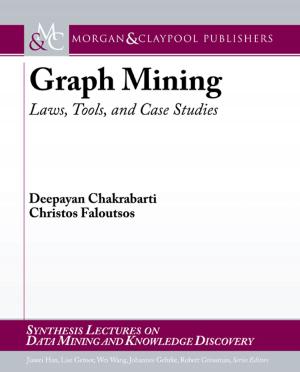Halo Nuclei
Nonfiction, Science & Nature, Science, Physics, Nuclear Physics, Biological Sciences, Molecular Physics, General Physics| Author: | Jim Al-Khalili | ISBN: | 9781681745824 |
| Publisher: | Morgan & Claypool Publishers | Publication: | November 8, 2017 |
| Imprint: | IOP Concise Physics | Language: | English |
| Author: | Jim Al-Khalili |
| ISBN: | 9781681745824 |
| Publisher: | Morgan & Claypool Publishers |
| Publication: | November 8, 2017 |
| Imprint: | IOP Concise Physics |
| Language: | English |
While neutron halos were discovered 30 years ago, this is the first book written on the subject of this exotic form of nuclei that typically contain many more neutrons than stable isotopes of those elements. It provides an introductory description of the halo and outlines the discovery and evidence for its existence. It also discusses different theoretical models of the halo's structure as well as models and techniques in reaction theory that have allowed us to study the halo. This is written at a level accessible to graduate students starting a PhD in nuclear physics.
Halo nuclei are an exotic form of atomic nuclei that contain typically many more neutrons than stable isotopes of those elements. To give you a famous example, an atom of the element lithium has three electrons orbiting a nucleus with three protons and, usually, either 3 or 4 neutrons. The difference in the number of neutrons gives us two different isotopes of lithium, Li6 and Li7. But if you keep adding neutrons to the nucleus you will eventually reach Li11, with still 3 protons (that means it's lithium) but with 8 neutrons. This nucleus is so neutron-rich that the last two are very weakly bound to the rest of the nucleus (a Li9 core). What happens is a quantum mechanical effect: the two outer neutrons float around beyond the rest of the nuclear core at a distance that is beyond the range of the force that is holding them to the core. This is utterly counterintuitive. It means the nucleus looks like a core plus extended diffuse cloud of neutron probability: the halo.
The author of the book, Jim Al-Khalili, is a theoretician who published some of the key papers on the structure of the halo in the mid and late 90s and was the first to determine its true size. This monograph is based on review articles he has written on the mathematical models used to determine the halo structure and the reactions used to model that structure.
While neutron halos were discovered 30 years ago, this is the first book written on the subject of this exotic form of nuclei that typically contain many more neutrons than stable isotopes of those elements. It provides an introductory description of the halo and outlines the discovery and evidence for its existence. It also discusses different theoretical models of the halo's structure as well as models and techniques in reaction theory that have allowed us to study the halo. This is written at a level accessible to graduate students starting a PhD in nuclear physics.
Halo nuclei are an exotic form of atomic nuclei that contain typically many more neutrons than stable isotopes of those elements. To give you a famous example, an atom of the element lithium has three electrons orbiting a nucleus with three protons and, usually, either 3 or 4 neutrons. The difference in the number of neutrons gives us two different isotopes of lithium, Li6 and Li7. But if you keep adding neutrons to the nucleus you will eventually reach Li11, with still 3 protons (that means it's lithium) but with 8 neutrons. This nucleus is so neutron-rich that the last two are very weakly bound to the rest of the nucleus (a Li9 core). What happens is a quantum mechanical effect: the two outer neutrons float around beyond the rest of the nuclear core at a distance that is beyond the range of the force that is holding them to the core. This is utterly counterintuitive. It means the nucleus looks like a core plus extended diffuse cloud of neutron probability: the halo.
The author of the book, Jim Al-Khalili, is a theoretician who published some of the key papers on the structure of the halo in the mid and late 90s and was the first to determine its true size. This monograph is based on review articles he has written on the mathematical models used to determine the halo structure and the reactions used to model that structure.















